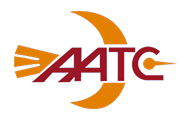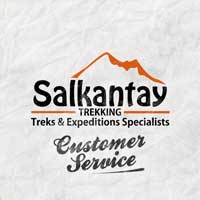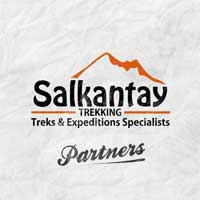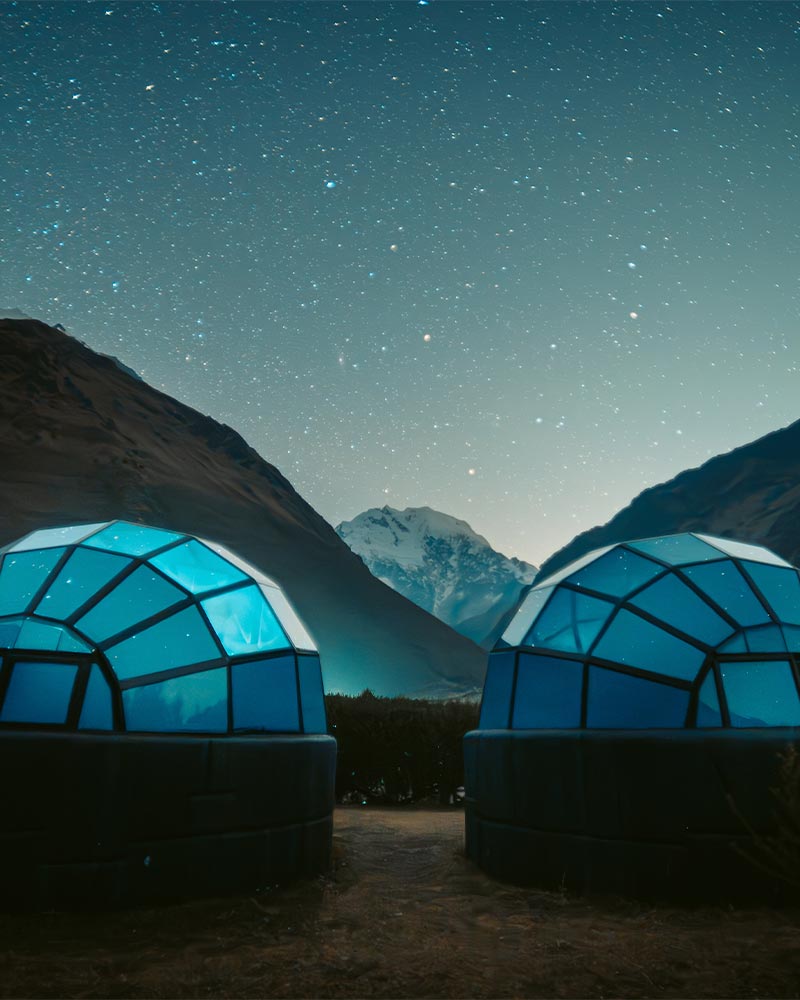The Ultimate Inca Trail Packing List Tour Guides
You’ve booked your place on the Inca Trail and it’s getting close to you leaving.
We know how excited you’re feeling and are looking forward to setting foot on the trail. But wait. First, you need to make sure you have everything ready that you’ll need on the trek. Not sure where to start? Don’t worry…
We’ve compiled the essential Inca Trail packing list to aid you with preparation for one of the best treks in the entire world.
On this page, you’ll find an in-depth description of all the necessary items you need to take with you to enjoy the safest and most enjoyable trek possible. All recommendations are ones we personally use and own, so we can guarantee they’ll help you trek comfortably every time. They offer the best value for money and top performance.
We know how excited you’re feeling and are looking forward to setting foot on the trail. But wait. First, you need to make sure you have everything ready that you’ll need on the trek. Not sure where to start? Don’t worry…
The Essential Packing List for Trekking the Inca Trail
Documents
Original Passport
This is perhaps the most important item you need to take on your trek. You know you need it to enter Peru, but you also need it to enter the Inca Trail. There’s an official government checkpoint at the beginning of the trail that works to implement the strict limits on how many visitors can walk the trail per day, and every foreigner beginning a trek is required to show their passport.
Your trek will also end in Machu Picchu, and you won’t be allowed into the site without it. Ensure your entrance tickets have the exact passport details on them, or this can also cause issues.
Backpack and Duffle Bag
Backpack
Along the Inca Trail, porters will carry the duffle bag with all your belongings inside, but you still need to carry a lightweight backpack with the items you’ll need throughout the day inside—snacks, water, camera, sunscreen, etc.
We propose a backpack with compression straps to decrease weight stress on your back, and side mesh pockets for fast access to your water bottle. The Osprey Talon is our favorite backpack.
It’s important you bring a rain cover for your backpack as you never know when there’ll be a downpour in the Andes. If you decide to use an Osprey backpack, then make sure you get an Osprey Raincover that matches the bag size for a snug fit.
Duffle Bag (included in the service)
The night before you leave on the Inca Trail, you have a briefing with us. Here, we’ll provide you with a duffle bag to pack all your clothes and other items during the hike. You can pack up to 7 kg/15.4 lbs weight allowance.
Our porters will take your duffle bag for you together with the food and camping gear along the entire route. It’s essential to note that you won’t have access to your things in the duffle bag until the end of each day at the campsites—the porters will always be ahead of the group as they do this hike all the time.
During the day, you need a backpack big enough to carry your personal belongings—a warm jacket, raincoat, camera, sunscreen, snacks, water, etc. A 30-liter backpack is usually sufficient.
Clothing
Underwear
First and foremost, you need to make sure you have enough underwear. We recommend bringing 4–6 x pairs of breathable sports underwear to help you feel most comfortable when trekking.
We highly recommend Icebreaker underwear, Adidas sports underwear, or Under Armour underwear, as these brands specifically focus on manufacturing products that can cope with sweat from high-intensity exercise and sports.
Base Layer
The base layer is also sometimes known as the next-to-skin layer or first layer. This is most important on the highest points of the trail, like Dead Woman’s Pass, where temperatures get much colder.
The best first layers fit snugly to the body (reducing air pockets and flow) and consist of high wicking materials to facilitate moisture transfer.
We recommend getting 2 top and 1 bottom base layer to last you.
Trekking Shirts
For the Inca Trail, we suggest you take 4–5 trekking shirts. We suggest you get these breathable and lightweight shirts from Hanes. Shirts from Icebreaker or Columbia are also top quality.
Don’t bring cotton shirts—these absorb moisture and can make you feel very uncomfortable. A mixture of short and long sleeve shirts is recommended for the differing climates.
Hard Shell Jacket and Rain Gear
You never know when it’ll suddenly start to rain in Peru, especially in the rainy season (Oct-Mar). We recommend you take a hard-shell jacket for ultimate protection when it’s wet, like the North Face Resolve Jacket.
It’s also worth taking a compact rain poncho that you can quickly put on should you encounter a light downpour.
Insulated Jacket
The third layer, or outer layer, should be made up of windproof, waterproof, and most importantly, a warm jacket and trousers. You’ll need these for the higher sections of the Inca Trail where it gets cold.
We highly recommend getting a high-quality jacket as it’s one of the few key items that’ll ensure your warmness and comfort along the route. We suggest the North Face Nuptse Jacket—a market-leading winter jacket—but there are many synthetic alternatives that are also practical.
Other top jacket brands include Patagonia Down Jacket, Arc’Teryx Atom, and Mountain Hardwear Down Jackets.
Fleece Jacket
This is used for the second layer or insulation layer and should always be made from a fleece material.
We love the Polartec 200 Fleece Jacket. These insulation jackets are remarkably good for hiking as they provide great warmth to weight ratio whilst permitting effective moisture transfer.
Recommended fleece brands included Helly Hansen, The North Face, and Patagonia.
Trekking Pants and Shorts
You’ll need to pack hiking shorts and pants, too. There are several brands to pick from, but we recommend Craghoppers, Columbia, or O’Neills.
You could buy convertible pants like this trekking model created by Craghoppers. Not only will they save you money as you won’t need to buy shorts, but they’re also super comfortable.
Take two pairs of pants and one pair of shorts.
Pajama Pants
In the evenings, you’ll want to unwind at camp and feel cozy in your bed. We suggest you take pajama pants or sweatpants that are warm and comfortable.
Inner Gloves
Inner gloves are like your hand’s next-to-skin layer. You should pack a lightweight, quick-drying inner glove, ideally made from fleece material.
We advise Pearl Izumi Thermal Lite Gloves, which can also be used as standalone gloves when the weather is moderately cold. Karrimor is another quality brand.
Outer Gloves
This hand layer acts like your outer jacket layer. They shield you from the cold and must be warm, waterproof, and durable. Gore-Tex gloves from Dakine or similar options from The North Face, Outdoor Research, or Black Diamond are recommended.
Headgear
Hat for Sun Protection
Along the Inca Trail, you’ll be at a reasonably high altitude, which means the UV rays from the sun are much stronger. You should pack a hiking hat that provides face and neck protection from the glaring sun.
We suggest you find one that can easily be folded to save in your bag and with a neck cover for ultimate protection.
Head Band or Beanie
In the evenings and early morning, the temperature can get pretty cold, especially at higher altitudes.
To keep yourself warm, we recommend a warm fleeced beanie or fleeced headband. Berghaus and The North Face provide some fantastic beanies that are excellent for hiking in the cold.
Neck Gaiter or Balaclava
If you feel the cold a lot, we recommend a neckband or balaclava that can keep your neck and face warm.
Buffs are super adaptable and can be worn as headbands, beanies, neck gaiters, and wristbands, as shown in the image.
Footwear
Hiking Boots
This is another of the most essential trekking items. After all, your feet are what get you from A to B on the Inca Trail.
If you take hiking boots that don’t fit right or that are brand new, you risk suffering from damaged toenails, painful blisters, and all-around sore feet.
To find the best fit, put your foot in a boot without tying the shoelaces. Once in, slide your foot all the way forward until the toes hit the front of the boot. You should be able to put your index finger down the back of the boot between your heel. If your finger has lots of room to move then the shoe is too big, but if you struggle to get your index finger into the boot then the shoe is too small.
Check out these reliable and highly recommended brands of the best hiking boots: Scarpa, Salomon—we like the Quest range—, Berghaus—we like the Explorer range—, Hi-Tec, and Karrimor.
Trekking Shoes/Sandals
Another essential comfort item is trekking shoes or comfy sandals. A day of trekking over rough terrain and up and down steps can take its toll on your feet. The first thing you’re going to want to do at camp is to change your footwear to something more comfortable.
We suggest you take trekking shoes, sneakers, or sandals. We like Merrel trekking shoes, and trekking sandals are excellent to wear with warm socks for maximum comfort.
Hiking Socks
You should pack 5–6 pairs of hiking socks and 4–5 pairs of high-wicking sock liners.
We recommend Coolmax hiking socks as they provide excellent breathability and have fantastic wicking properties. Smartwool, Bridgedale, and Point 6 also make exceptional socks.
Don’t take ring cotton socks—these will lead to nasty blisters and sweating.
Thermal Socks
Pack 1 or 2 pairs of thermal socks for the cold hiking days around the upper parts of the Inca Trail.
We recommend Smartwool thermal socks—they are very warm, provide great cushioning for the foot, and have flat seams (bulky seams result in blisters).
Other top brands are Wigwam and Bridgedale.
Gaiters
Gaiters are made from waterproof material and extend up from your boot to the top of your calf.
Gaiters are used to stop water, dust, mud, snow, ice, and small stones from getting into your hiking boots. These are essential during any season of the year.
Sleeping Bag
Sleeping Bag
For the Inca Trail, you need to take a warm sleeping bag to keep you cozy during the cold nights.
The most suitable types of sleeping bags are produced using a duck or goose down, but they also tend to be the most costly. If you’re stretched for cash, a warm synthetic alternative is fine. Just make sure that it has a rating of at least -10°C.
Look out for a sleeping bag that has a mummy shape with an insulated hood and drawcord to fit the contours of your body. Two-way zippers for better insulation are great.
We support the following brands and models: The North Face Snow Leopard, Marmot Trestles, Mountain Hardwear Phantom Highlander, or Coleman.
Important Accessories
Trekking Poles
Investing in some top-quality trekking poles can do wonders for your knees and ankles. They can reduce the impact by up to 20%. They’re excellent for descending and softening the blow as you’ll feel more strain when going downhill.
We suggest getting light-weight (around 350 grams per pair) and adjustable trekking poles, because they’re easy to store and extremely versatile. Black Diamond walking poles are excellent, as are Leki poles.
Sunglasses
When you’re hiking at such a high altitude, you need to protect yourself as much as possible from harmful UV rays that glare from above and reflect off snowy peaks.
You should bring a decent pair of UV protection sunglasses (minimum of 80% light reduction). We celebrate mountain sunglasses from Julbo.
Flashlight or Headlamp
Although you won’t be trekking at night, you may well need to use the bathroom or like to read before going to sleep. Many of the campsites are dimly lit or have no electricity at all, so extra lighting is very helpful.
Petzl Tikka is the best headlamp brand. Don’t forget to bring additional batteries as well.
Water Bottle or Hydration Bladder
High altitude can take a toll on your body and dehydration is common. You need to drink 2–3 liters a day, otherwise you risk suffering heat stroke or dizziness and might even have to miss out on the rest of the hike.
Water can be taken in a standard water bottle—we recommend getting 2 x 1L CamelBak Water Bottles.
Or, if your daypack accommodates space for a hydration bladder, then the 2L Platypus Hydration Bladder is an exceptional product.
Camera
We’re sure you’ll be blown away by the incredible scenery along the Inca Trail. The landscapes in the Andes are astounding, and we’re sure you’ll want to capture it all in HD. If you don’t have a good camera, now’s the time to invest.
Here are some recommended and affordable Digital SLR cameras. Remember, you want to make sure your camera is light but still able to capture high-quality images. We like the Panasonic Lumex. If you’re more inclined to take videos, then you might want to consider the GoPro.
Notebook/Journal & Pen
You don’t have to take this item but it’s a great idea to jot down things as you go to help you remember this incredible journey as vividly as possible.
Personal Gear and Medication
-
Swimsuit:
If you plan on taking a dip in Aguas Calientes hot springs, this is a necessity.
-
Trekking Towel:
A small to medium-sized hiking towel can come in very handy. LifeVentures or Discovery provide reliable, quick-drying trekking towels.
-
Cash
It’s a great idea to have extra cash (S/300–S/400) in case of an emergency.
-
Toilet Paper
You might need to go to the bathroom during the day. You’ll need toilet paper as most toilets don’t usually provide this.
-
Portable Power Pack
There are no places to charge your devices on the Inca Trail, so this accessory is a great idea so you can charge anytime, anywhere.
-
Small Locks
To protect your belongings in your backpack or duffle bag.
-
Waterproof Ziplock Bags
These come in useful for storing important/valuable items like your money, passport, and electrical equipment
-
Isotonic Powder
Can be used to flavor your water and helps replace electrolytes, improving energy levels and aiding water absorption.
-
Diamox
Also known as acetazolamide, this is a medication that can be used as a prophylactic (preventative) solution for altitude sickness. It does not cure altitude sickness and should never, therefore, be used as a method to continue ascending to high altitudes. It can, however, help prevent the onset of altitude sickness and is commonly used by high altitude climbers and trekkers.
-
General Medications
We advise taking paracetamol or aspirin for headaches (a common altitude sickness symptom on the Salkantay Trek) and Imodium for diarrhea.
-
Sunscreen/Lip balm
No one wants burnt skin or cracked lips. Be sure to bring 1 x sunscreen (SPF 50+) and 1 x lip balm.
-
Bug Spray/Repellent
As you get closer and closer to Machu Picchu, you’ll come across more insects that like to bite! You’ll need this to keep them at bay.
-
Baby Wipes/Body Wipes
For quick and easy wet washes when no showers are in sight—which they won’t be on the Inca Trail! Bring 1 x baby wipes or body wipes.
-
Blister Plasters
The dreaded blisters! We recommend taking Compeed blister plasters
-
Hand Sanitizer
Great for disinfecting hands before and after eating, or when they get dirty during the hike.
What to Pack in Your Backpack
We’ve already stated how important it is to take a lightweight backpack to carry the necessities during the day. But, what exactly should you put in there? Don’t worry. Check out this backpack checklist of what to put in your daypack.
- Rain jacket/poncho
- Fleece
- Sunhat/beanie
- Water bottle
- Bug spray
- Sunscreen
- Personal medication
- Toilet paper
- Cash
- Passport
- Camera
Find the Perfect Destination in Peru
With astonishingly varied landscapes, stunning scenery, compelling history, and a legacy of fascinating cultures, there is truly something for everyone. Our expeditions in Peru are designed to showcase all that this country has to offer.
Our expeditions in Peru are designed to showcase all that this country has to offer.











